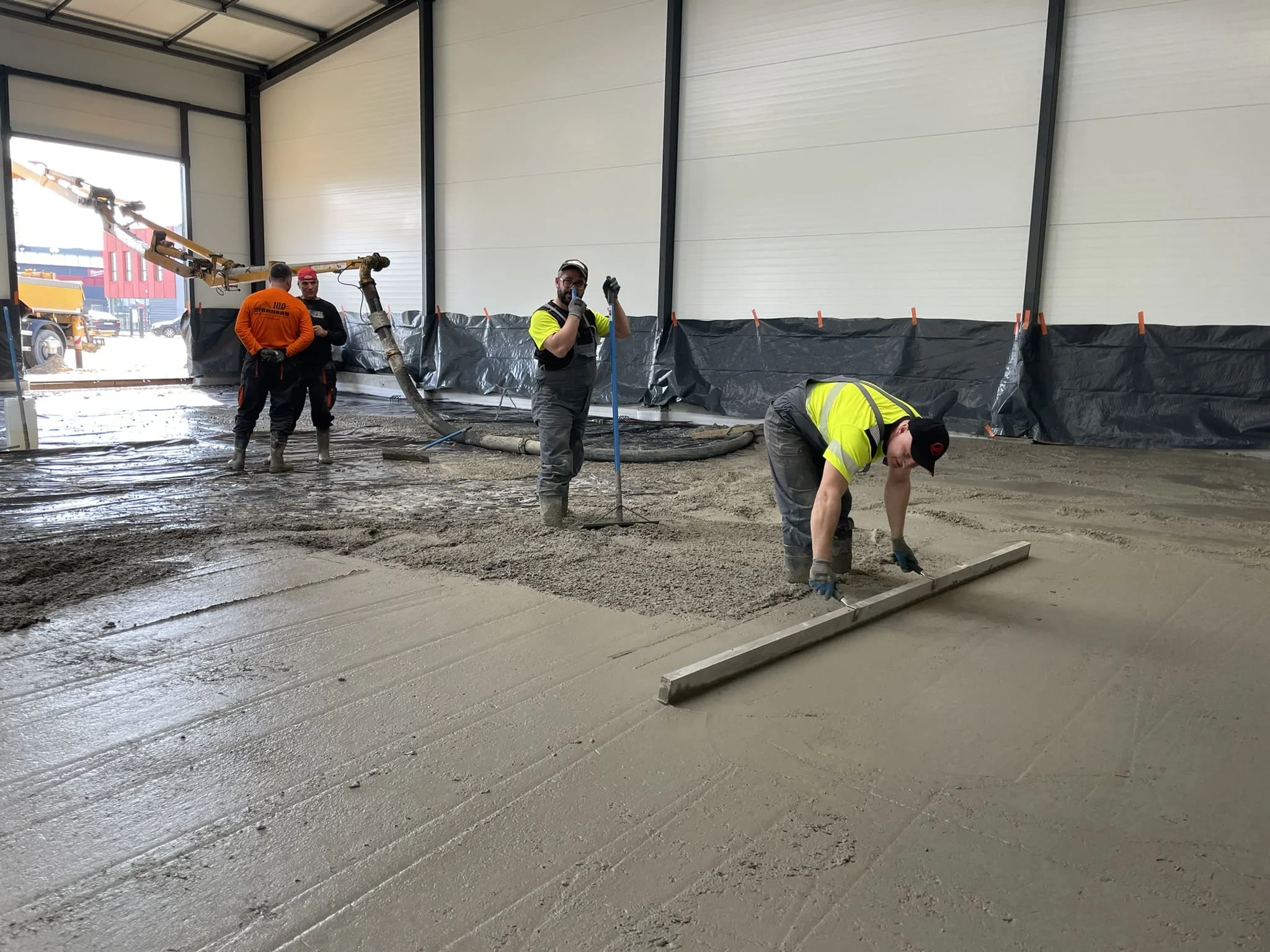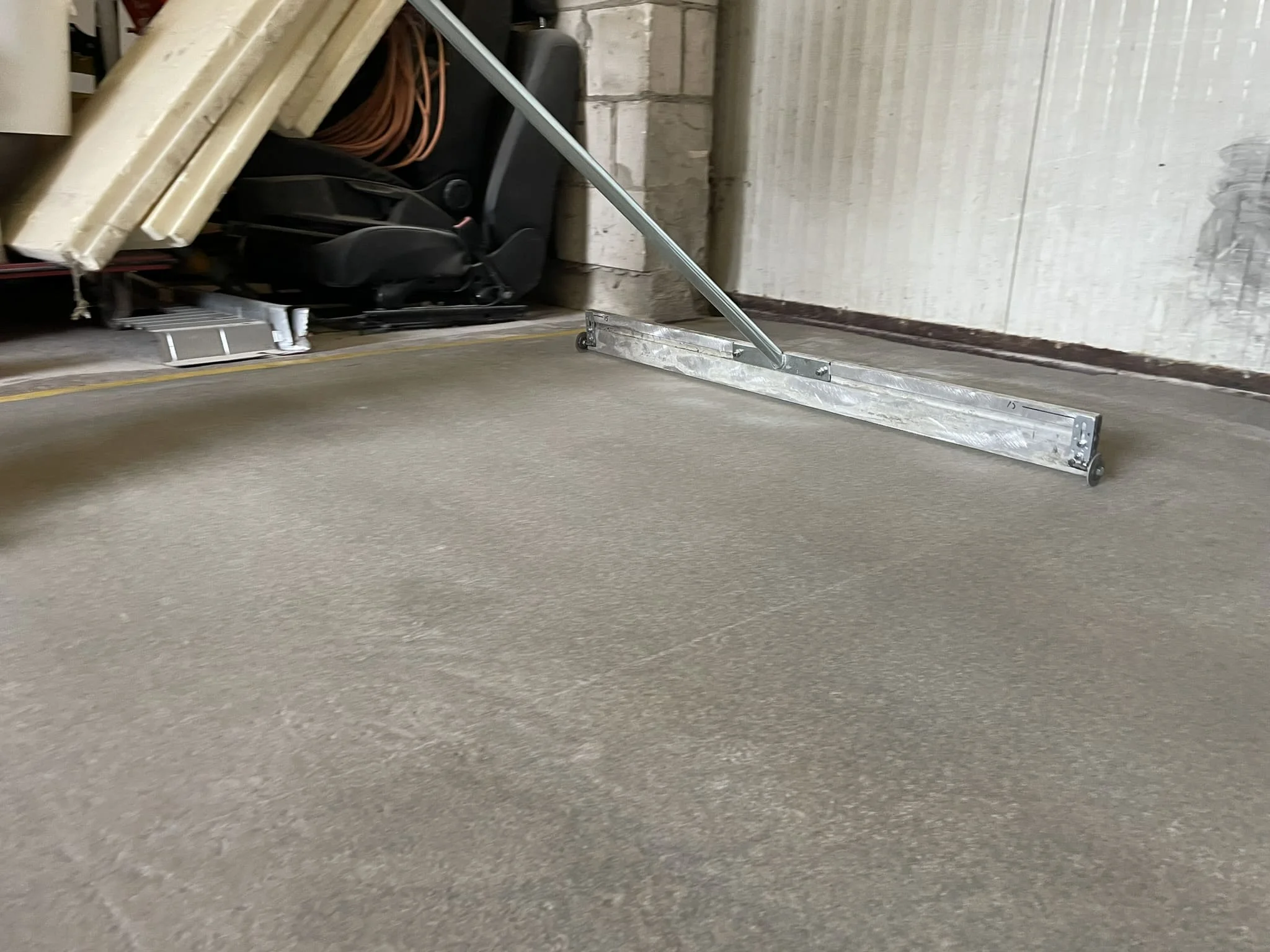How to level an industrial concrete floor correctly?
Leveling an industrial concrete floor is a key stage in construction that has a direct impact on the durability, functionality and safety of the entire structure.
A properly constructed floor not only extends the life of the facility, but also minimizes the costs of future repairs and maintenance. In this article, we will present the steps that will help in properly leveling concrete floors in industrial conditions.
Before pouring concrete, the subfloor must be meticulously prepared. Make sure that all vegetation, debris, and other contaminants have been removed. Adding a layer of gravel or aggregate improves drainage, which is especially important for industrial floors. A thin layer of lean concrete should be poured over the cured gravel subfloor to improve the stability and uniformity of the actual polished concrete.
The leveling system consists of reference points, linear markers and lasers. Place leveling profiles (such as battens or pipes) in places that will determine the final level of the industrial floor. Make sure they are level using a laser level. Reference points, or benchmarks, should be evenly distributed over the entire surface of the screed. They will make it easier to monitor the evenness during the pouring of the concrete.

Even pouring of concrete is key to achieving a well-leveled floor. Make sure the concrete is of the right consistency and is thoroughly mixed. The concrete is poured in sections, starting from one corner and moving systematically in the opposite direction. Each section should be leveled using a trowel. Using a concrete vibrator allows for the removal of air bubbles, which increases the density and durability of the industrial floor.
The final step is to precisely level the surface of the pumped concrete. When the concrete begins to harden but is still plastic, it should be leveled with a trowel. This will help to achieve a perfectly smooth and even surface. Use a laser level to regularly check the level. Any corrections should be made immediately, before the concrete hardens.
The process of concrete curing is as important as the pouring itself. The floor should be protected from drying out too quickly by wetting or using special protective films. Regularly monitor industrial concrete floor for cracks and other damage during the first few days of hardening. Chemical agents that accelerate the setting of concrete can also be used if the floor needs to be used quickly.
Proper leveling of an industrial concrete floor is a process that requires precision, the right tools and materials, and care at every stage. Every step, from substrate preparation to concrete maintenance, is crucial to ensuring the durability and functionality of the floor. Following the above recommendations will help avoid costly repairs and technical problems in the future, while ensuring a stable and safe working environment.

What are the tools for leveling a concrete floor and how to use them?
Leveling and smoothing a concrete floor is a key step in any construction or renovation.
To achieve a perfect end result, the right tools and the ability to use them correctly are essential. In the following article, we will discuss the most important tools for leveling industrial concrete floor and their applications.
A laser level is a precision tool that emits a laser beam, allowing for precise level determination on large surfaces. Set the laser level on a tripod in the center of the room. Turn on the device and wait for the laser beam to stabilize. Use the laser detector to read the level at various points on the surface of the resin floor. Any deviation from the level must be corrected immediately.
A leveling rod is a long, straight rod made of metal or wood, used to manually smooth freshly poured concrete. Place the rod on a leveling profile or directly on the concrete surface. Move the rod back and forth in a zigzag motion to remove excess concrete and fill low spots. Check the concrete level regularly with a laser level or spirit level.
A notched trowel is a tool with a metal blade with teeth, used to evenly spread concrete or mortar. Apply the concrete to the surface. Move the notched trowel in different directions to spread the concrete evenly. It is ideal for applying thin layers of concrete or leveling the surface before applying subsequent layers of concrete flooring.

Concrete vibrators are mechanical devices that vibrate at a high frequency, helping to remove air bubbles and increase the density of concrete. Insert the tip of the vibrator into freshly poured concrete. Move the device slowly to evenly compact the concrete over the entire surface to avoid floor repairs later. Avoid leaving the vibrator in one place for too long, as this will cause excessive compaction of the concrete.
Industrial concrete floor trowel, also known as a helicopter, is a mechanical tool with rotating blades that is used to smooth the surface of concrete. Wait until the concrete begins to harden but is still pliable. Start the trowel and move it evenly over the entire surface of the concrete, controlling the pressure. Depending on the degree of hardening of the concrete, this process can be repeated several times, increasing the speed of the blades to achieve a smooth surface.
A spirit level is a simple but essential instrument for routinely checking the level of industrial flooring at various points. Set the level directly on the concrete surface. Check that the air bubble in the level tube is in the center position. Any deviation indicates that the section of concrete requires leveling.
Leveling bars are support systems that help keep concrete level as it is poured. Place leveling bars in strategic locations on the surface before pouring the concrete. Make sure all bars are level with a level or spirit level. Pour the concrete between the bars and use a leveling rod to move the concrete evenly along the bars. Keep safety in mind for your property later and install safety barriers.
Leveling Industrial concrete floor requires precision, the right tools and the ability to use them properly. Using a laser level, leveling rod, notched trowel, concrete vibrators, mechanical float, spirit level and leveling strips ensures accuracy and uniformity when pouring and smoothing concrete. Following the right techniques and regularly checking the surface level are key to achieving a durable and perfectly level concrete floor, which is extremely important in any construction or renovation project.





